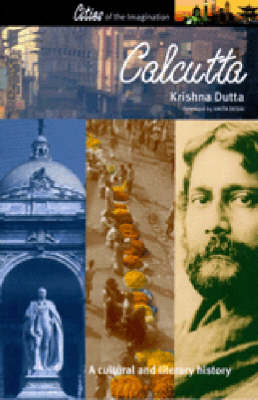
Calcutta
A Cultural and Literary Companion
Seiten
2003
Signal Books Ltd (Verlag)
978-1-902669-59-5 (ISBN)
Signal Books Ltd (Verlag)
978-1-902669-59-5 (ISBN)
- Titel ist leider vergriffen;
keine Neuauflage - Artikel merken
This work shows that, found in the 1690s by East India Company merchants beside the Hugli River, Calcutta grew into both India's capital during the Raj and the second city of the British Empire. Named the City of Palaces, Calcutta was the city of Clive, Hastings, Macaulay, and Curzon.
In the popular imagination, Calcutta is a packed and pestilential sprawl, made notorious by the Black Hole and the works of Mother Teresa. Kipling called it a City of Dreadful Night, and a century later V.S. Naipaul, Gunter Grass and Louis Malle revived its hellish image. This is the place where the West first truly encountered the East. Founded in the 1690s by East India Company merchants beside the Hugli River, Calcutta grew into India's capital during the Raj and the second city of the British Empire. Named the City of Palaces for its neoclassical mansions, Calcutta was the city of Clive, Hastings, Macaulay and Curzon. It was also home to extraordinary Bengalis such as Rabindranath Tagore, the first Asian Nobel laureate, and Satyajit Ray, among the geniuses of world cinema. Above all, Calcutta (renamed Kolkata in 2001) is a city of extremes, where exquisite refinement rubs shoulders with coarse commercialism and political violence. Krishna Dutta explores these multiple paradoxes, giving personal insight into Calcutta's unique history and modern identity as reflected in its architecture, literature, cinema and music.
CITY OF ARTISTS: Modern India's cultural capital; home city of Tagore, Ray and Jamini Roy; College Street and the annual book fair; a city of learning and books. CITY OF DURGA AND KALI: Kumortuli's holy images and the flamboyant annual Durga Puja; Kalighat Temple and Kali, Calcutta's divine and terrible protectress. CITY OF PALACES: Grand colonial monuments and crumbling mansions of the Bengali babus; an architectural mix of Palladian, Baroque, Rococo, Gothic, Hindu and Islamic.
In the popular imagination, Calcutta is a packed and pestilential sprawl, made notorious by the Black Hole and the works of Mother Teresa. Kipling called it a City of Dreadful Night, and a century later V.S. Naipaul, Gunter Grass and Louis Malle revived its hellish image. This is the place where the West first truly encountered the East. Founded in the 1690s by East India Company merchants beside the Hugli River, Calcutta grew into India's capital during the Raj and the second city of the British Empire. Named the City of Palaces for its neoclassical mansions, Calcutta was the city of Clive, Hastings, Macaulay and Curzon. It was also home to extraordinary Bengalis such as Rabindranath Tagore, the first Asian Nobel laureate, and Satyajit Ray, among the geniuses of world cinema. Above all, Calcutta (renamed Kolkata in 2001) is a city of extremes, where exquisite refinement rubs shoulders with coarse commercialism and political violence. Krishna Dutta explores these multiple paradoxes, giving personal insight into Calcutta's unique history and modern identity as reflected in its architecture, literature, cinema and music.
CITY OF ARTISTS: Modern India's cultural capital; home city of Tagore, Ray and Jamini Roy; College Street and the annual book fair; a city of learning and books. CITY OF DURGA AND KALI: Kumortuli's holy images and the flamboyant annual Durga Puja; Kalighat Temple and Kali, Calcutta's divine and terrible protectress. CITY OF PALACES: Grand colonial monuments and crumbling mansions of the Bengali babus; an architectural mix of Palladian, Baroque, Rococo, Gothic, Hindu and Islamic.
KRISHNA DUTTA was born and brought up in Calcutta. She has translated Bengali literature and written several books on Rabindranath Tagore.
| Erscheint lt. Verlag | 21.5.2003 |
|---|---|
| Reihe/Serie | Cities of the Imagination ; v. 12 |
| Vorwort | Anita Desai |
| Zusatzinfo | illustrations, map, index, bibliography |
| Verlagsort | Oxford |
| Sprache | englisch |
| Maße | 133 x 203 mm |
| Gewicht | 357 g |
| Themenwelt | Reiseführer ► Asien ► Indien |
| Geisteswissenschaften ► Sprach- / Literaturwissenschaft ► Anglistik / Amerikanistik | |
| Geisteswissenschaften ► Sprach- / Literaturwissenschaft ► Literaturwissenschaft | |
| Sozialwissenschaften ► Soziologie ► Spezielle Soziologien | |
| ISBN-10 | 1-902669-59-2 / 1902669592 |
| ISBN-13 | 978-1-902669-59-5 / 9781902669595 |
| Zustand | Neuware |
| Haben Sie eine Frage zum Produkt? |


